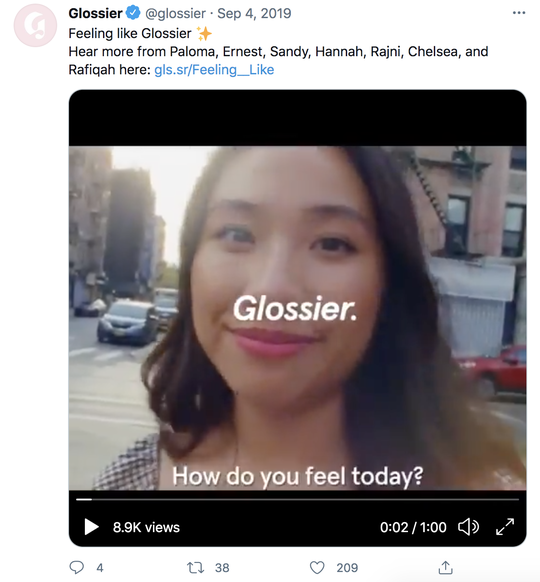When you’re running a small business, time is money. Because your time runs tight, you need to focus on marketing activities that generate the greatest ROI. If you don’t have an airtight email marketing strategy, you’re probably leaving money on the table and wasting time. Small business owners can’t afford to let that happen.
According to outsourced CMO and marketing consultancy Hawke Media, email strategies drive anywhere from 20 to 25 percent of total online revenue. The reason so many small business owners miss out is that they’re often focused on short-term sales. While this is understandable, it doesn’t have to be an either-or situation.
Email marketing is one long-tail strategy that can magnify the impact of your other marketing activities. When used effectively, email can convert leads into customers, customers into repeat buyers, and repeat buyers into brand evangelists. You’d be amazed at how much more effective even one brand evangelist can be as compared to dozens of paid advertising campaigns.
It takes time to build campaigns that convert, yes, but once you get them set up, you can lean on automation to do the heavy lifting for you. Listed below are five smart ways to use email marketing to generate more online sales.
1. Create a compelling offer.
Most often, when a potential customer visits your website, she isn’t yet ready to buy. She may have clicked on an ad or stumbled across your business via social media. More than likely, she is probably at the beginning of the customer journey. If this individual simply clicks away, you lose the chance you had at turning her into a customer.
To keep this from happening, you need to develop a compelling offer that entices her to sign up for your email list. This is sometimes called a “lead magnet.” A lead magnet can be anything — a coupon, a quiz, a 14-day trial, a mini-course — but it should be closely related to your product or service, and it must deliver value. You want whatever you offer to be compelling in and of itself, regardless of whether the recipient decides to purchase your product or service.
It might help to think of your lead magnet as something akin to the free-sample stations you frequently find at your local Costco.
The whole point is to give your customer a taste of your full-priced offering so she comes back for more. All too often, though, businesses make the mistake of offering a watered-down version of their platform or a “video course” that’s little more than a 30-minute pitch. Worse than being ineffective, these can actually create a lasting negative impression of your brand.
Instead, your lead magnet should provide a satisfying experience that gives potential customers real value in exchange for their email address. Providing no-strings value is something that makes them more likely to come back to you to purchase your full-priced product or service.
2. Nurture potential customers through the use of automated campaigns.
Once an individual signs up for your email list, it’s your job to maintain her interest so that she’ll become a customer. The best way to do this is to deliver value in every single email — whether that comes in the form of information, inspiration, entertainment, or a special offer. You shouldn’t ask someone to make a purchase as soon as she gives you her email address. People see this as tacky. Instead, your emails should follow a pattern of “give, give, give, ask.”
You can automate the process of nurturing potential customers throughout their lifecycle. This can be accomplished through a drip campaign or a nurture campaign.
Drip campaigns are set up to send “drips” of content at scheduled intervals to every person on your list. These are great for keeping your business top of mind and for letting current and potential customers know about special offers.
Nurture campaigns are automated series of emails sent that are based on a customer’s behavior, such as email opens and clicks. Nurture campaigns are more sophisticated because they allow you to segment customers and tailor the content they see based on their interests, behavior, and stage in the customer journey. If, for example, a customer downloads an SEO whitepaper and then clicks on a link to a post about the upcoming Google update, you might send her an offer for a free phone consultation to help improve her website.
3. Gather data on your customers and their biggest pain points.
Creating valuable content for your email campaigns doesn’t just benefit your customer base. Anytime someone signs up for your lead magnet, opens an email, or clicks on a link, she is giving you valuable information. By testing a variety of lead magnets and creating an ongoing stream of helpful email content, you can learn a great deal about your customers’ pain points, aspirations, and price sensitivity.
The companies with the best email marketing strategies don’t just have one lead magnet. They have several that appeal to different types of customers with different challenges.
Take HubSpot, for instance. The inbound marketing software giant has free e-books, courses, templates, and kits that all address a specific pain point. Hubspot can discern which topics are trending simply by analyzing the number of downloads for a specific resource. By testing different lead magnets, you too can find out what your customers need the most help with.
Once you begin sending emails, you can test different subject lines and email content to see what resonates with your audience. Say you’re a health brand with two different posts about superfoods. If significantly more customers click through to read your post on “foods to boost immunity” than your post on “foods to improve gut health,” you might conclude that your customers are most concerned about staving off illness. Being armed with this information will help you tailor future messaging.
4. Upsell your customers and encourage repeat purchases.
As soon as a customer places an order, you have a perfect opportunity to upsell her or begin encouraging repeat purchases. Momma’s Shop, a small online business that sells maternity and nursing apparel, leverages this tactic by sending an email offer to add an item to order at a deep discount immediately after a purchase is made.
These types of upsell offers are extremely compelling because a customer just made the decision to buy and is still in that purchasing mindset. If the upsell offer is targeted intelligently and dovetails nicely with what the customer has already purchased, you increase the likelihood that your offer will pique their interest.
Even if a customer doesn’t convert on the upsell, you still have future opportunities to encourage repeat purchases. You can send a special offer a week or two later or an email introducing the customer to a complementary product or service. She may be so satisfied with her original purchase that she wants to try something else.
5. Ask for referrals and reviews.
One often-overlooked email marketing strategy is to get your existing customers to sell on your behalf. Once you have a happy customer, you can use email to turn her into a brand evangelist. An easy win is to send an automated follow-up email asking customers about their purchase experience. This can be as simple as clicking a star rating or a thumbs up/thumbs down within the body of the email. There’s a real art to demonstrating respect for your customer’s time and simultaneously asking them for feedback.
Whenever you interact with a happy customer, prompt her to leave a review.
According to a survey by Bright Local, nine out of 10 people read online reviews and 84 percent of consumers trust them as much as a friend’s recommendation. You can also incentivize customers to refer your business to a friend by offering them a special discount. This can magnify word of mouth to generate more sales.
When small business owners are pressed for time and have limited bandwidth, it can be all too easy to focus on short-term sales. But email marketing is an investment in your business that pays dividends over months and years. It takes time to set up effective campaigns, but think of that time as an investment in your future growth. Once you have your automated sequences in place, they can continue to generate sales 24 hours a day and increase the satisfaction (and lifetime value) of every customer.


